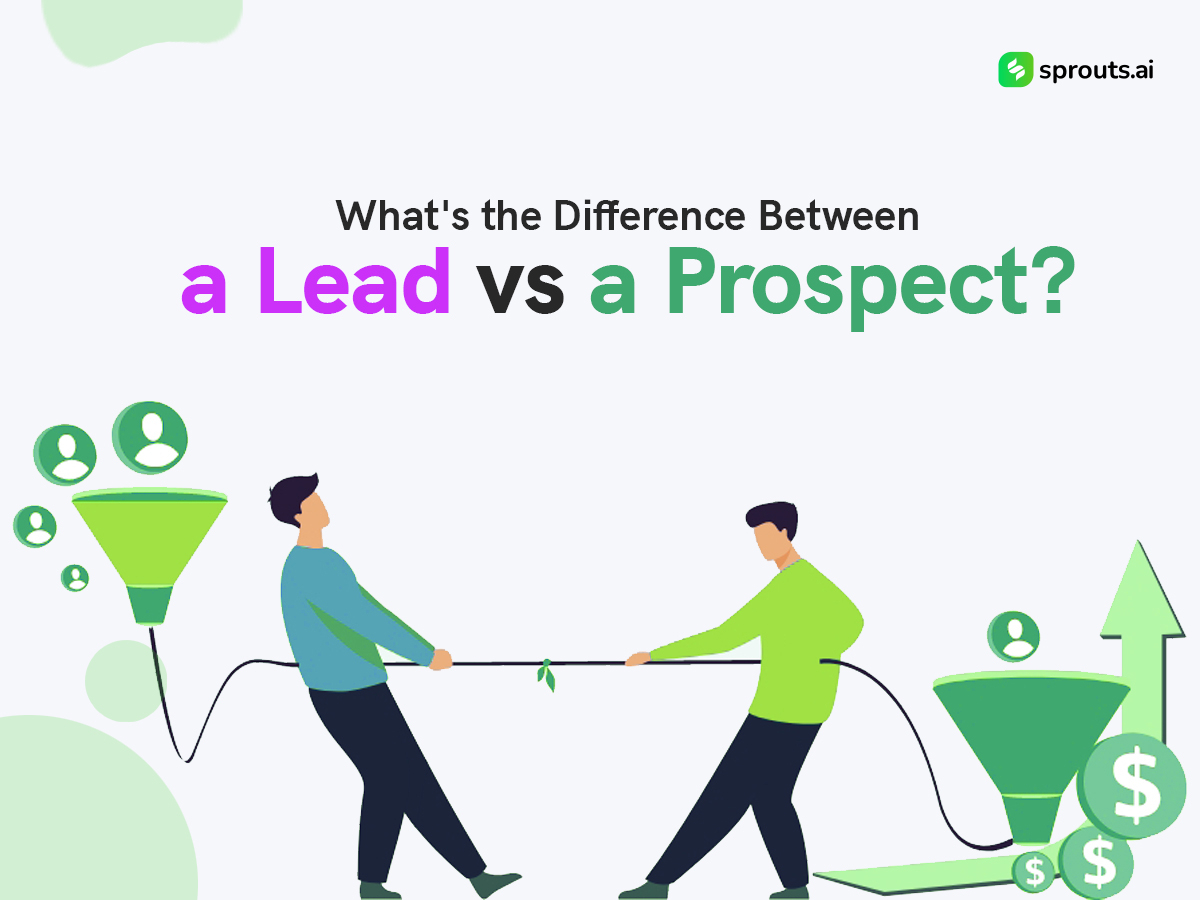Every clientele begins as an unfamiliar face. The consistent sales journey transforms a stranger into a potential customer, eventually leading them to make a purchase—the terms “lead” and “prospect” help depict the stage of a business relationship. A lead represents someone interested in your target market but needs more time to purchase.
If the lead positively engages with your proposal, they’ll evolve into a prospect.
Defining the Terms
Let’s start by clearly defining what we mean by leads and prospects before we go into the details. A lead is a potential customer who has shown interest in your product or service. This interest can manifest through filling out a form, downloading a whitepaper, or subscribing to a newsletter. On the other hand, a prospect is a lead that has progressed further down the sales funnel. Prospects are characterized by a deeper level of engagement and a higher likelihood of conversion than leads.
Understanding Leads
Think of leads as the starting point of your sales journey – they’re like curious wanderers, checking out what your business has to offer. They might have stumbled upon your website, clicked on an ad, or attended a webinar. The key feature of a lead is that they have expressed a modicum of interest, but it is yet to be determined if this curiosity will blossom into a genuine intent to purchase. Leads come in various forms. They could be marketing qualified leads (MQLs), individuals who have shown interest through marketing efforts, or sales qualified leads (SQLs), those who have been identified as more likely to convert based on their interactions with sales initiatives. Recognizing the nature of your leads is vital for tailoring your approach accordingly.
Nurturing Leads
The nurturing process involves providing valuable content, personalized communication, and addressing the specific pain points of the lead. Understanding their needs, preferences, and challenges helps establish a connection, gradually transforming a lead from a passive observer into an engaged participant.
Consider employing marketing automation tools to streamline this process. These tools can help you track the lead’s interactions with your content, allowing you to tailor your communication based on their behaviour. Remember, the goal at this stage is not an immediate sale but to cultivate a relationship that will eventually lead to a more committed prospect.
The Transition: Lead to Prospect
As a lead progresses through the nurturing process, it evolves into a prospect. What sets a prospect apart is the heightened level of engagement and the inclination towards a purchasing decision. Unlike leads, prospects have moved beyond the initial stages of curiosity; they are now contemplating the practicality of your product or service in addressing their needs. Identifying prospects involves a nuanced analysis of their behaviour and interactions. Monitor factors such as repeated engagement with specific content, participation in product demonstrations, or requesting more detailed information. These signs indicate a growing interest and a willingness to invest time in understanding your business.
Tailoring the Approach: Prospecting Strategies
Once a lead transitions into a prospect, your approach should reflect this shift in the relationship. While leads benefit from educational content and general information, prospects require more targeted and personalized communication. This is the stage to delve into the specific features and benefits of your offering, addressing how it directly addresses the prospect’s pain points. Personalization becomes the linchpin of prospecting. Leverage the data gathered during the lead nurturing phase to tailor your conversations. Reference their specific interactions, acknowledge their challenges, and demonstrate how your solution provides a tailored fit. This level of personalization not only enhances the prospect’s experience but also showcases your commitment to understanding and solving their problems.
Closing the Deal: From Prospect to Customer
The ultimate goal of any sales journey is, of course, conversion. As prospects move further down the funnel, they approach the decision-making stage. This is the opportune moment to provide in-depth product demonstrations, offer trial periods, or provide case studies showcasing successful implementations. Closing the deal requires a strategic balance of assertiveness and empathy. While it’s essential to highlight the value proposition of your offering, it’s equally important to address any lingering concerns or objections the prospect may have. During this phase, a collaborative and consultative approach fosters trust and positions your business as a reliable partner in solving their challenges.
The Importance of Lead and Prospect Segmentation
Recognizing that not all leads or prospects are created equal allows for a more nuanced and practical approach. Segmenting leads based on their behaviour, demographics, or source of origin enables targeted communication strategies. For instance, a lead who has downloaded a comprehensive e-book may require a different approach than a lead who attended a product webinar. Similarly, prospects in different industries or with varying pain points may necessitate tailored messaging to resonate effectively. By understanding the unique characteristics of each segment, you can optimize your efforts and resources, maximizing the impact of your sales initiatives.
Navigating various stages of sales requires precision. Understanding the small but crucial differences between leads and prospects gives salespeople the tools to guide potential customers from curiosity to a successful purchase. Recognizing the unique needs at each stage allows for a more focused and effective approach, building stronger relationships. As you start your sales journey, remember the power of knowing these differences.

